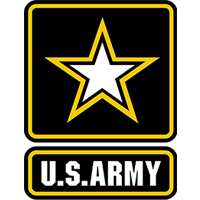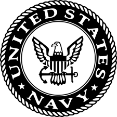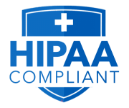Before the introduction of modern digital formats, microforms were the most reliable media for archiving vital records, providing easy access to data, and drastically lowering the need for physical file cabinets. Unfortunately, these microformats have become irrelevant as digital technology continues to advance.
Today, it takes a long time for antiquated readers to retrieve images from microforms. Therefore, organizations are opting for microform scanning because of the enormous benefits of converting these records to digital, searchable files. Therefore, Smooth Solutions provides high-quality microfiche and microfilm digitization services and aperture card scanning services. Read on to learn more about microforms, their types, uses, and conversion to digital formats.
What are Microforms?
A microform is a miniature version of a larger image or document that can be seen, saved, or printed. The standard for archiving microform images and documents on film or paper is a reduction in size by 25%. Due to the high density of information contained in microforms, they are frequently used in libraries and other archives with restricted physical space.
Types of Microforms
The three main types of microforms include microfilm, microfiche, and aperture cards.
1. Microfilm
You can think of microfilm as a miniature film reel. There are three main types of microfilm: 16mm, 35mm, and 105mm microfilm cards. They are used to store miniature copies of files on photographic film. A standard microfilm roll can hold 600 drawings or 2,400 standard letter-sized pages.
At Smooth Solutions, we use cutting-edge microfilm conversion scanners for microfilm rolls or cartridges. It is possible to scan microfilm into grayscale or black-and-white images. JIF, GIF, JPEG, TIFF, PDF, Searchable PDF, and many more image formats are all available.
As a result of our rigorous quality control measures and skilled scanning staff, we can guarantee our clients only the finest quality images. We strictly adhere to our regulations and treat all microfilm with the highest care and accuracy. Our focus is on providing you with microfilm scanning of the greatest quality at an affordable price.
2. Microfiche
A microfiche is a single, flat image, as opposed to a microfilm roll’s succession of images. Photographs are laid together in a matrix on a sheet, often measuring 105mm × 145mm. Approximately 98 pages of text can be stored on a single microfiche sheet.
Microfiche film scanning and microfiche conversion are equivalent in terms of output because both are photographic reproductions. Modern microfiche scanners can read 16mm, 35mm, and 70mm microfiche, as well as Step and Repeat, Jacketed, and COM microfiche
We offer microfiche conversion to digital services at Smooth Solutions and can scan over a million images per week. However, this varies depending on the condition of the microfiche cards. We will scan your microfiches quickly and accurately, no matter how many you have.
3. Aperture Cards
Aperture cards, also known as Hollerith cards, are the simplest form of microform storage and can only store a single image. Microfilm aperture cards are coded with indexing information for the image and feature a hole for 35mm microfilm. Our aperture card scanners use dual-stream scanning technology to simultaneously produce B&W and grayscale images.
The resulting digital images can be automatically indexed if the aperture card has Hollerith data. Suppose a card does not have Hollerith data. In that case, it can be manually indexed using either the digital picture or the information written on the aperture card. Once properly scanned and indexed, you won’t need to retain a relic of a reader-printer machine around.
What Are Microforms Used For?
Microforms are used extensively in libraries and organizations. In the 1960s, preserving historical newspapers and periodicals became a normal practice, leading to a near doubling of library sizes due to the accumulated newspaper and publishing archives.
Microformats allowed for the compact storage of deteriorating back issues of journals and the preservation of historical writings as microfilm documents. In addition, library patrons now had easier access to these works without being concerned about the fragile paper or pages.
Because of the significant space savings that can be achieved by compressing documents, this method of storing is widely adopted by companies and other institutions. When compared to paper counterparts, microforms are far more cost-effective to distribute. Plus, microforms can be found in a wide variety of formats.
Why Scan Microform Media to Digital Formats?
Over the years, microforms became less and less common as the world moved to digital formats. There are many advantages of microfilm scanning and microfiche scanning. For example, transferring microform to digital formats means you have to spend less time looking for documents and more time printing and handing them out. Data previously stored on microfilm, microfiche, and aperture cards can be available online in a fully searchable database.
You can also save money by reducing the time workers spend looking for, printing, and passing out papers. But most of all, it keeps vital records safe from the perils of time, improper filing, and accidental destruction while the capacity to swiftly find and exchange relevant information is greatly enhanced.
If you are looking for a microform scanning service to convert your microforms into digital formats, consider Smooth Solutions. We offer the best scanning services for the best rates. In addition, we also provide a document scan service and document imaging service to meet all your scanning needs. Contact us today to learn more about our services.














